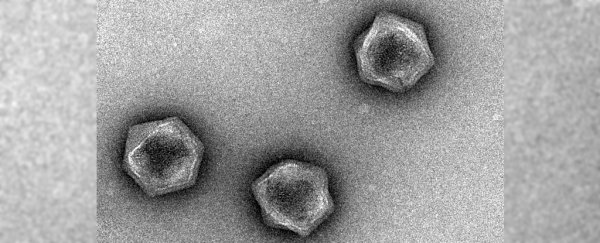The more we discover about giant viruses, the more questions we seem to have. Unlike most viruses, these giant strains are so large they can even be mistaken for bacteria, and the size and complexity of their genomes seem to present no end of mysteries.
Giant viruses were only first identified this century, but numerous such finds since then have challenged our long-held assumptions about what viruses really are, including whether they should in fact be considered living creatures after all.
Some of these giant viruses even seem to create their own genes; others possess genetic code we've never encountered anywhere before.
Giant viruses aren't only notable for what's different about them, though. Increasingly, we seem to find types with features only seen in living cells, and a striking new discovery made by scientists at Virginia Tech has found other puzzling genetic similarities between giant viruses and cellular life.
"It used to be that there was very little overlap, and the more we learn, the more they continue to overlap," explains microbial ecologist Frank Aylward.
"In terms of the genomic repertoires, they have much more in common than we would actually expect."
In a new study, researchers conducted a survey of viral diversity, sifting through publicly available metagenome databases containing a trove of genetic code, from which they assembled putative genomes for 501 different kinds of giant viruses in the proposed order of nucleocytoplasmic large DNA viruses (NCLDVs), mostly from aquatic environments (where they infect things like algae).
In addition to finding expected genes for processes such as capsid construction and viral infectivity, the team found giant viruses harbour a huge diversity of genes involved in aspects of cellular metabolism, including processes such as nutrient uptake, light harvesting, and nitrogen metabolism.
Metabolic genes have been identified in viruses before, but this is something different, the researchers say.
Previous research in NCLDVs has uncovered genes thought to be acquired from cellular life through lateral gene transfer - the movement of genetic material between organisms, as opposed to it being passed down from parent to offspring. In the viral context, this suggests viruses might acquire genes by chance from infected hosts.
Here, however, the team found evolutionary lineages of viral metabolic genes that went far deeper, suggesting longstanding relationships between pathogens and hosts, the symbiotic significance of which we can't yet fully unravel.
"It implies that the viruses have had these genes for millions of years, even billions of years, and they're virus-specific metabolic genes," Aylward explains.
"Once viruses infect a cell, we can't think of the cell as being its own autonomous entity anymore. The fundamental aspects of cellular physiology are being rewired by these viruses upon infection."
In other words, giant viruses and their ancient ancestors may have dwelled alongside cellular organisms for eons, not only replicating inside the cells of living creatures, but exerting an unseen influence on their metabolic processes all this time.
Like many of the other discoveries we seem to make about giant viruses, it seems to call for a double-take, if not an outright paradigm shift.
"Viruses have historically been viewed as accessories to cellular life, and as such their influence on biogeochemical cycles has largely been viewed through the lens of their impact on host mortality, rather than any direct metabolic activities of their own," the authors write in their paper.
"The large number of cellular metabolic genes encoded in NCLDV genomes that we reveal in this study brings to light an alternative view in which virus-specific enzymes have a direct role in shaping virocell physiology."
Next, the researchers want to conduct experimental studies exploring how host metabolisms might be affected by giant viruses, and by the viral genes ostensibly carried to rewire metabolic processes.
No matter what answers we find, given it's giant viruses we're dealing with, you can bet there will be plenty of new unknowns to puzzle over.
"They're just a bag of mystery," says microbiologist Mohammad Moniruzzaman. "They're like a big forest and you are standing in front of the forest and you don't know what's in it."
The findings are reported in Nature Communication.
